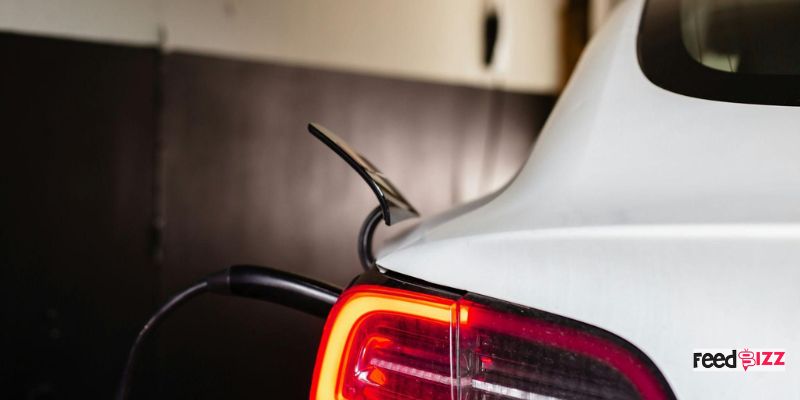If you’ve switched to an electric vehicle, chances are you’ve already noticed how different the fueling experience is. No more gas stations, oil changes, or noisy engines. But when it comes to powering up your EV, understanding how to do it efficiently and safely at home is a game-changer.
Home charging is the backbone of EV ownership. It’s convenient, cost-effective, and, when done right, seamlessly fits into your lifestyle. Whether you’re a weekend road tripper or a daily commuter, the ability to plug in overnight and wake up to a fully charged battery is a luxury you’ll quickly grow to love.
This blog will cover everything you need to know to confidently charge your EV at home—from understanding the different charging levels to choosing the right setup and avoiding common pitfalls. Ready to plug in? Let’s get started.
Understanding the Basics of EV Charging
Before you start comparing hardware or calling electricians, it’s worth taking a moment to understand the basics. Home charging might seem complicated at first, but once you break it down, it’s pretty straightforward.
The two main types of charging that matter for home use are Level 1 and Level 2. Level 1 charging is the simplest—it uses a standard 120-volt outlet, just like your toaster plugs into. It’s slow, but it works. You’ll get about 3 to 5 miles of range per hour, manageable if you’re not driving much or can leave the car plugged in overnight for longer stretches.
Level 2 charging, on the other hand, steps things up. It requires a 240-volt outlet (similar to what your clothes dryer uses) and delivers much faster results, usually adding 20 to 30 miles of range per hour. This is the sweet spot for most EV owners who rely on their car daily and want a full battery without waiting all day.
Many new EV owners assume that faster is always better. But the truth is, your ideal charging speed depends on your routine. If you drive 10 miles daily and your car sits in the garage for 12 hours every night, Level 1 might be all you need. The key is matching your charging habits to your driving lifestyle.
Some people also worry about charging too often or overcharging their battery at home. Modern EVs and chargers are smart—they stop pulling power once the battery is full. So, daily charging isn’t going to wear things out prematurely, and in fact, it’s often better to keep your battery topped up rather than letting it run low.
So, whether you’re just dipping your toe into the EV world or have been driving electric for years, knowing the difference between these charging options—and how they align with your needs—sets the foundation for a smooth home charging experience.
Choosing the Right Setup for Your Home
Now that you understand the charging levels, it’s time to figure out what kind of setup makes the most sense for your home. It’s not just about plugging in—finding the right balance between convenience, speed, and safety.
The first step is to take a look at your driving habits. Do you need to recharge every night fully, or are you mostly topping off after short daily drives? Your answer will influence whether a Level 1 charger is sufficient or if you’d benefit from installing a Level 2 system. Think of it like deciding between a kettle and an espresso machine—they both heat things, but one’s built for speed.
Next, take a peek at your home’s electrical panel. Not every household is instantly ready for high-powered charging. Depending on how your home is wired, you might need to upgrade your panel or dedicate a new circuit just for your charger. That’s not as scary (or expensive) as it sounds, but it’s something to plan for. A licensed electrician can tell you precisely what you need based on your panel’s capacity and the charger you’re considering.
And when it comes to installation, don’t DIY this one. Charging an electric vehicle involves high-voltage electricity, and proper installation is critical—not just for performance, but for your safety. Look for an installer who’s experienced with EV systems and familiar with your local electrical codes. In some areas, rebates and incentives are tied to using certified professionals, so it can also save you money in the long run.
There’s also the question of location. Where will your vehicle be parked most often? The charger should be mounted somewhere easily accessible, ideally near the charging port on your vehicle. And don’t forget weatherproofing—if your charger will live outdoors, make sure it’s designed to handle the elements.
At this stage, many drivers explore options like an electric car charger for home when they want faster, more reliable charging solutions tailored to their routine. These chargers often come with added features like Wi-Fi connectivity, usage tracking, and even scheduling tools so you can charge during off-peak electricity hours.
Choosing the correct setup isn’t just about what works today—it’s about ensuring your charging station keeps pace with your lifestyle and the rapid evolution of the EV market. Whether you’re future-proofing for a second EV or just want something you can set and forget, planning it out thoughtfully pays off.
Managing Costs and Maximizing Efficiency
If you’ve ever opened your electricity bill after a long month of charging and thought, “Wait, is this normal?”—you’re not alone. Charging costs at home aren’t complicated, but a little strategy goes a long way.
First, let’s talk about the upfront costs. If you’ve installed a Level 2 charger, you probably paid a few hundred dollars for the unit and maybe several hundred more for professional installation. That might feel like a lot, but it tends to pay for itself over time. Public charging stations—high-speed chargers—can be significantly more expensive per kilowatt-hour. On the other hand, charging at home gives you the freedom to plug in overnight while paying standard residential electricity rates.
Speaking of rates, timing is everything. Many utility companies offer “time-of-use” pricing, which means electricity is cheaper during off-peak hours (usually overnight). If your charger has scheduling capabilities, you can set it to start automatically during those hours. It’s a minor adjustment that can lead to meaningful savings over time.
Efficiency also comes down to how you drive and when you charge. Do you frequently take short trips? Try grouping errands together to reduce overall energy use. Do you leave your car plugged in when it doesn’t need to be charging? Consider unplugging once it’s full to reduce phantom energy draw, especially if your charger doesn’t have a built-in shutoff feature.
And don’t forget about rebates and tax credits. Depending on where you live, there might be financial incentives for purchasing a charger, installing one, or charging your car at home. Check with your local utility or energy agency to see what’s available. A little paperwork could save you hundreds.
Ultimately, managing costs isn’t about making sacrifices but working smarter. When you understand how and when to charge, you can enjoy the perks of EV ownership without stressing about your monthly bills.
Maintenance and Troubleshooting
Once your home charging setup is in place, it’s easy to fall into set-it-and-forget-it mode. And for the most part, that’s okay. But just like any appliance, your EV charger needs attention now and then to keep running smoothly.
Start with a visual inspection every few weeks. Look for wear on the cable, cracks in the connector, or damage to the wall mount. If your charger is outside, check for signs of weather-related wear, like rust or water infiltration. A quality charger should be built to handle the elements, but nature is relentless—better safe than stranded.
Cleaning is straightforward: Unplug the charger before doing anything, then wipe it down with a soft, damp cloth. Avoid harsh chemicals or pressure washers—they do more harm than good. Never spray water directly into the plug or charging unit.
What about software? Many smart chargers have apps that let you monitor usage, get updates, and manage settings. Make sure your app and firmware are kept up to date. These updates can improve performance, fix bugs, or add new features. It’s like giving your charger a little digital tune-up.
If you ever notice slower charging times, unusual noises, or your vehicle failing to recognize the charger, don’t panic. Start with the basics: check your breakers, inspect the plug, and try rebooting the system and still having issues? That’s when it’s time to call in a pro. Never try to open or repair the charger yourself unless you’re qualified—electrical work is serious business.
The good news? Most quality chargers are incredibly reliable and require very little maintenance. But staying proactive helps you avoid hiccups and extend the life of your investment. A well-maintained charger doesn’t just perform better—it keeps you safe and your EV road-ready at all times.
Future-Proofing Your Charging Setup
As EV technology evolves, so do the options for charging at home. What works for your current vehicle might not be the best fit in a few years, and if you’re planning to stay electric for the long haul, thinking ahead now can save you a lot of effort (and expense) later.
First, consider the potential for more EVs in your household. Maybe your partner’s next car will be electric, or you plan to upgrade to a larger model with a bigger battery. Either way, your home charging system should be ready to support multiple vehicles or higher-capacity charging.
Look for scalable chargers—some units can be networked together, while others offer dual ports. Even if you only use one vehicle now, wiring for a second charger during the initial install is often much cheaper than retrofitting later. Talk to your electrician about adding extra capacity while you’re already in the middle of installation.
Then there’s the tech itself. Some of the newest chargers on the market support features like bidirectional charging, which allows your EV to pull power from your home and send energy back to it. While not all vehicles support this, the trend is gaining traction, especially as more homeowners install solar panels and home battery systems.
You’ll also want to ensure the charger you choose can receive firmware updates and integrate with smart home systems. That means you can control it with voice commands, adjust settings from your phone, or let your energy provider manage charging to take advantage of grid incentives. It’s all about flexibility—and staying ahead of the curve.
A little foresight now can turn your home charging setup from a convenience into a serious long-term asset. As electric vehicles become more mainstream, homes ready for them may even have an edge in the real estate market. Future-proofing doesn’t just help you stay current—it enables you to stay ahead.
Conclusion: Making the Most of Charging at Home
Charging your EV at home isn’t just about plugging in a cable—it’s about building a system that works for your lifestyle, home, and long-term goals. Whether you’re just starting or refining an existing setup, understanding the ins and outs of home charging can save you time, money, and frustration.
From knowing the difference between charging levels to setting up your system for efficiency, safety, and future growth, each decision you make adds to a better overall experience. The more informed you are, the more confident you’ll feel whenever you pull into the driveway and power up.
Your EV journey starts at home, and with the proper knowledge, it stays simple, innovative, and sustainable.









